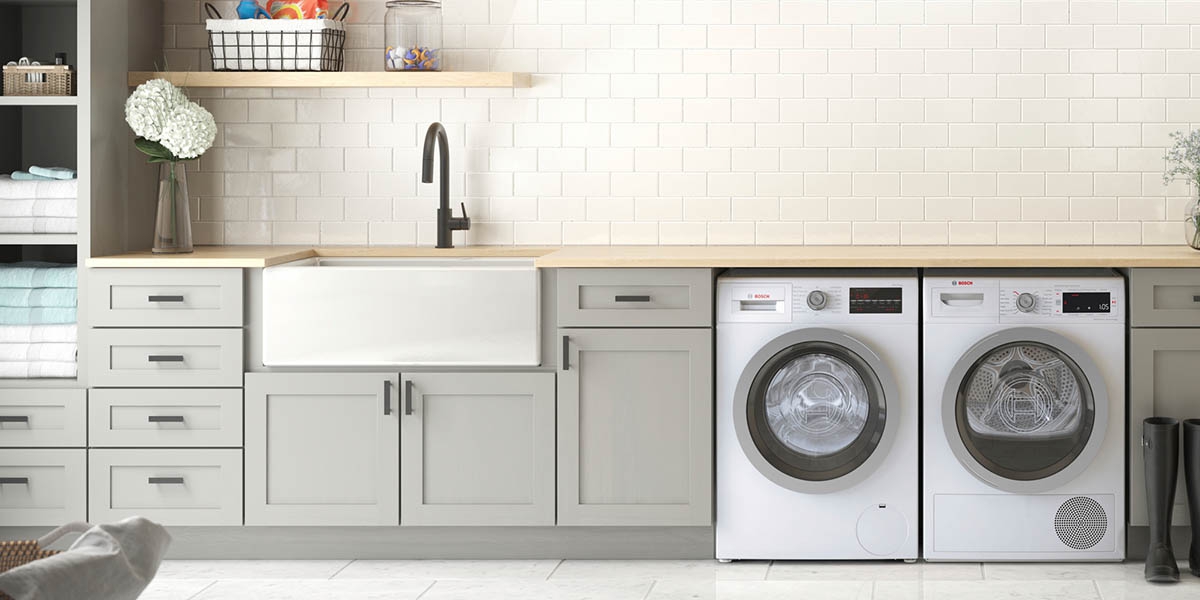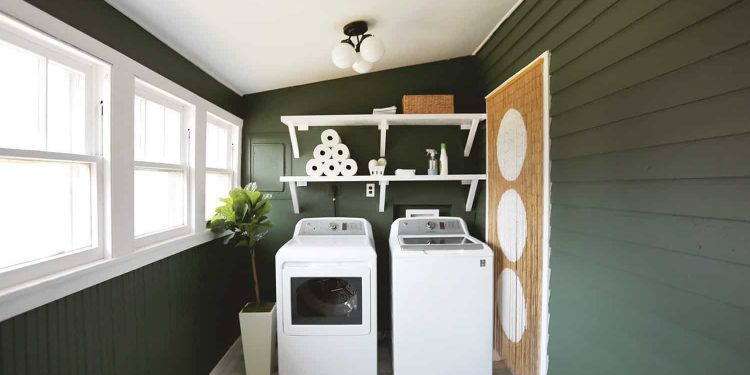Modern home design has evolved over the past decade to reflect the need for our interiors to feel both comfortable and functional. With urban living on the rise, our kitchen, laundry, and bathroom spaces have become more compact, with a growing focus on using space elegantly as well as economically.
With our kitchens and bathrooms, a lot of these design changes can be seen in the redesign of modern fixtures, like stainless steel faucets and other streamlined appliances. When it comes to redesigning a laundry, however, it can be trickier to know where to begin. Washers and dryers are just as boxy as they ever were, and laundry rooms haven’t been through much of an obvious evolution themselves.
So how do you go about updating and renovating a laundry room? Read on for some handy little tips and tricks for refreshing this often neglected interior space.
Update any outdated fixtures
If your washer and dryer are still going strong, consider turning your attention to your laundry sink. Laundry sinks are perhaps amongst the largest basins in your home, and are generally multi-purpose for this reason. If you ever need to mop, chances are you’ll fill your bucket at the laundry sink. If a mat ever needs a good scrub? Most of us would rather head to the laundry room than tackle that job in the backyard.
If, however, your laundry room basin isn’t deep or wide enough for ensuring easy household use, you may want to browse online or head to some local home design showrooms to have a look at some modern laundry basins. Stainless steel sinks are recommended over plastic or acrylic basins, as they’re generally less prone to scratching and discolouration.
Although replacing your washer or dryer alongside a sink refit may feel like far too big a job, it’s still recommended that you at least assess the energy rating of your washer and dryer. If the energy or water ratings of your appliances are low, updating these appliances may also cut your utilities bills clean in half.
Use your vertical space
It’s no secret that laundries tend to be some of the smallest interior spaces in our homes, in fact it’s common for the laundry room to be tacked on to another bathroom in most modern townhouses or apartments. If you are tackling a particularly small laundry room space, you’ll want to ‘build up’ rather than ‘out’, as it were.
It’s worthwhile adding overhead cabinets or shelving above your washer and dryer, so that you can make the most of your laundry’s vertical space. It’s a good idea to have a mixture of closed and open-faced cabinets as well, as you can potentially also use overhead space as storage for baskets or hampers that aren’t being used, further increasing the available floor space in your laundry.
Other flexible storage considerations that you may like to make include installing shelving along your walls, or potentially even hooks or clothes racks for hanging baskets with ease.
Design with functionality in mind
Finally, as stated earlier, your laundry room is one of the most functional rooms in your home, so it makes sense to be mindful of functionality in your personal design scheme. If you’ve installed some versatile shelving or clothes racks, then you are halfway towards boosting the overall functionality of your laundry space, but there are other elements you can potentially incorporate.

For instance, consider tiling the walls to help minimise risks of water damage when cleaning at your basin. You can also use decorative tiles to ensure that your laundry room is designed with a particular interior style in mind. Vintage mosaic tiles or subway tiles are generally classic go-tos for laundry room set-ups, but feel free to think outside the box and create your own signature look with mixing and matching tile designs. As laundry rooms are generally monochromatic spaces, experimenting with colour at any scale can certainly go a long way.
There are always a few ways to freshen up functional interiors, but ideally the best approach will always ensure functionality stays a top priority. Your laundry space will be no exception here. So long as your designs answer the question ‘How can I make this space work better for me?’ then chances are your redesign will be a stunning success.





